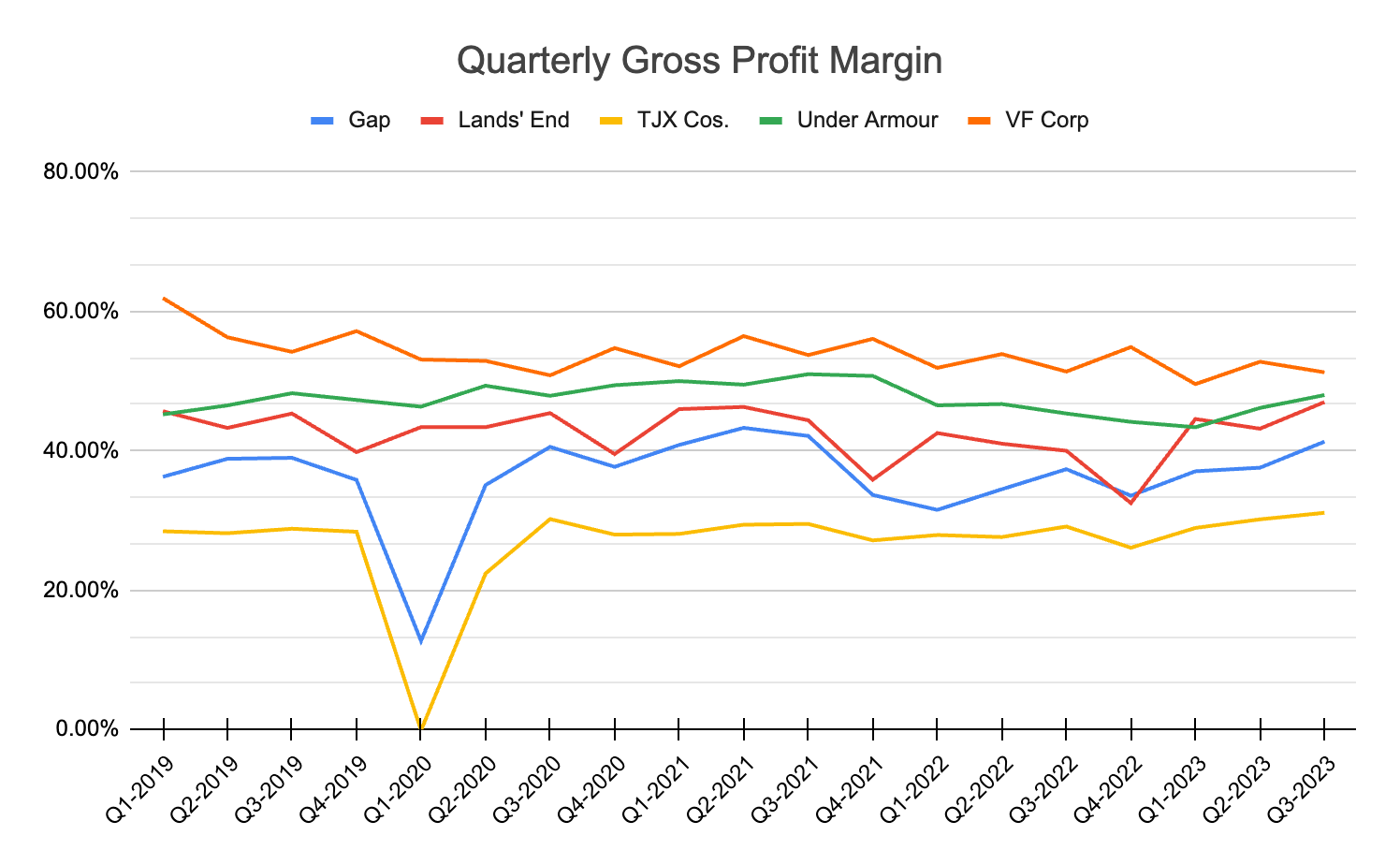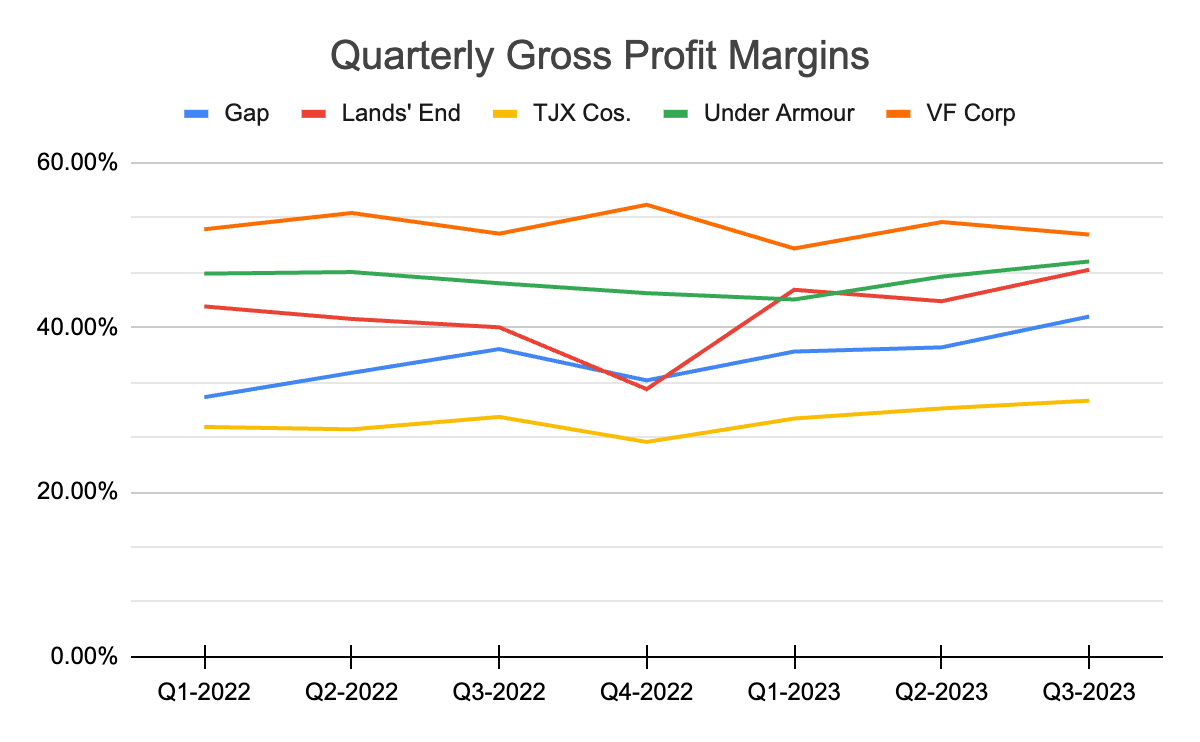Clothing retailer Lands’ End filed its latest earnings release on Tuesday, with what seemed like underwhelming results: revenue down 12.5 percent from the year-ago period ($324.5 million), operating income swinging to a loss of $101.3 million, largely driven by a big honking goodwill impairment of $106.7 million.
So why did Lands’ End ($LE) shares pop by nearly 10 percent when the company dropped such icky news? Perhaps because the company also reported an improvement in gross profit.
The company said so itself, in its earnings release: “Our deliberate efforts to generate more profitable sales resulted in increased gross profit dollars and gross margin expansion of approximately 700 basis points and drove Adjusted EBITDA above the high end of our guidance range.”
You can see why that might be the case. Gross profit is total revenue minus cost of revenue, and can be construed as a company’s ability to ward off inflationary pressure. If you can raise prices more than the cost of revenue, you can pass along higher cost of revenue to consumers, and protect net income. (Sure, other operating costs might rise due to inflation too, but you can always address that by being a cheap-o and embracing layoffs.)
For the record, gross profit at Lands’ End rose 2.8 percent from the year-earlier period: $148.4 million one year ago, to $152.6 million today. Gross profit margin was 47 percent.
Calcbench then wondered: how does Lands’ End gross margin compare to its competitors? So we fired up our Multi-Company database page to compare quarterly gross profit margin at four other firms as well: TJX Cos. ($TJX), Gap ($GPS), VF Corp. ($VFC), and Under Armour ($UA).
Our standardized metrics field tracks gross profit as a matter of course. Then we selected the “Time Series Data” option to pull up quarterly gross margins as far back as the start of 2019. The result is Figure 1, below.

Lands’ End is the line in red, and two points immediately jump out from the page. First, Lands’ End did not suffer any dramatic plunge in gross profit during the pandemic, which is more than we can say for Gap and TJX. (Presumably that’s because those two firms rely on in-store sales more than the others?)
Second, gross profit for Lands’ End began a sharp climb upward at the end of 2022 — much higher than the other four firms, although Gap does make a decent show of things in the last few quarters. If that steep ascend for Lands’ End is hard to discern, here’s how matters look if you start from the beginning of 2022.

Like, now you see it: while other retailers battled back and forth with inflationary pressures for the last 18 months, Lands End has made an impressive march upward since the start of this year.
We should also note that goodwill impairment of $106.7 million. Lands’ End attributes that to “the decline in the company’s share price,” and lord knows that’s true. The company went from a high of $42 per share in mid-2021 to $11 one year ago, to a lackluster $6.75 in the last six weeks or so.
But as ugly as that impairment makes net income this quarter, long-term growth depends on factors like gross and operating profit margin. Right now, gross profit is moving in the right direction — and it’s moving in that direction faster than Lands’ End competitors.
All of this insight, we brought to the surface with a few from our Recent Filings page (to notice Lands’ End at all), followed by our Multi-Company page (to research time-series data for Lands’ End and its competitors), then exported to Excel. Took us all of five minutes. What research do you want to perform for the companies you follow?